
It is impossible to miss the impressive Haleakalā, Maui's largest volcano which rises to 3,055 metres and whose summit is often above the clouds. A true emblem of the island, the volcano was still active several hundred years ago. The date of its last eruption is not really known (it would have occurred between 1480 and 1600), but it would have erupted 7 times in the last 1000 years.
Today it is considered asleep but it could wake up at any time! Although the risk of an eruption is still quite low today, there is no indication that it has fallen asleep for good! Therefore, Haleakalā continues to be monitored. And if we consider that Hawaiian volcanoes are experiencing a last breath materialized by a huge final explosion, the Haleakala has not finished being talked about!
Despite everything, climbing to the top of Haleakalā is a must in Maui, as long as you have good weather up there at least one day of your stay (bad weather is common up there!).
The road that leads to the top of Haleakalā is not just a long, winding strip of asphalt that a few cows populate here and there with wide curves. It is also breathtaking hikes and viewpoints! In this article, we suggest that you take a look around, so you can plan a full day at the top of Haleakalā, the "house of the sun".
Summary
1Get to the top of Haleakalā
The access road
Access to the top of Haleakalā is easy with any motorized vehicle. Route 378 allows access knowing that it is paved and in excellent condition all the way to the end.
It will take approximately 45 minutes to 1 hour to reach the summit from the base of the ascent at the junction with Highway 377.
Access and rates
All the points of interest and hikes are within the Haleakalā National Park, one of the 3 national parks of the archipelago which extends from the summit to Kipahulu.
The admission fee is $30 per car, or $25 per motorcycle. The pass is valid for 3 consecutive days and can be purchased at the cabin you will pass at the entrance of the park. If you arrive outside of the ranger's hours of presence, it will be possible to buy your ticket at the automatic ticket machine that you will find at the entrance huts.
If you plan to visit Big Island, it will be interesting to buy the Hawai 'i Tri-Park Annual Pass which gives access to the 3 national parks of Hawaii for 1 year for $55 (valid for 1 vehicle). Finally, if you have it, the America The Beautiful pass is also accepted.
The park is open 24 hours a day, 7 days a week, however, access is limited between 3:00 and 7:00 am only to people with a reservation for the "sunrise". Do not try to come without a reservation during this time slot, you will be asked to turn around and in any case you will have to wait until 7:00 a.m. to be able to cross the park entrance, even if you do not plan to go up there to watch the sunrise.
2Viewpoints to discover at the summit
The road leading to the top of Haleakalā serves several points of view. In total, 4 belvederes will allow you to discover the incredible craters that only reveal themselves near the summit.
Leleiwi Overlook
This first overlook is an appetizer of the panorama that will be revealed to your eyes once you arrive at Haleakalā Visitor Center (the one at the top).
We noticed it rather badly for the main reason that it reveals precisely a part of the panorama and spoils the surprise of the summit... We therefore advise you to discover it only on your way back down, even if we were not particularly impressed by what we will call a " half-panorama ".
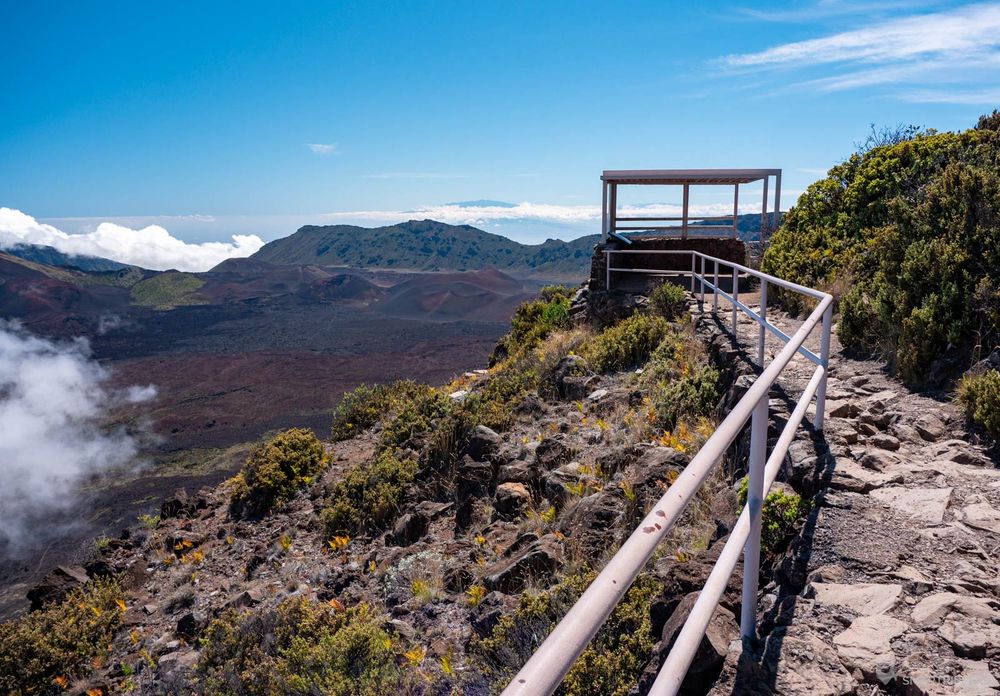
From here you can see down below the Halemau'u Trail which allows you to start from the top of the volcano via the Sliding Sands Trail and descend to the Hosmer Grove Loop Trail via the Supply Trail for a total distance of 18 km!
You can enjoy the view by parking on the left side of the road as you descend, at one of the few pedestrian crossings on Highway 378. Once parked, you will have to join the small trail that runs across the road to the viewpoint. It will take less than 5 minutes to cover the 250 meters of the trail.
Kalahaku Overlook
This second overlook offers a beautiful view of the ash cones of Haleakalā and gives a complementary perspective to the main viewpoint from the summit. Same grievance as for the previous viewpoint, we think you have to discover it on the way down, and it's a good thing because a sign forbids you to turn towards the road leading to the viewpoint on the way up!

It is still much more impressive than the Leleiwi Overlook. Access is direct from the car park after climbing a few steps. You will find sanitary facilities here.
The panorama at Haleakalā Visitor Center
Finally, here's the highlight of the show! It's the most impressive view you'll find at the top. From here the view is grandiose. The scene offered to our eyes seems apocalyptic especially if you discover the volcano just after sunrise, against the light with a few scattered clouds that just let the cones of ashes rise. The effect is absolutely crazy!
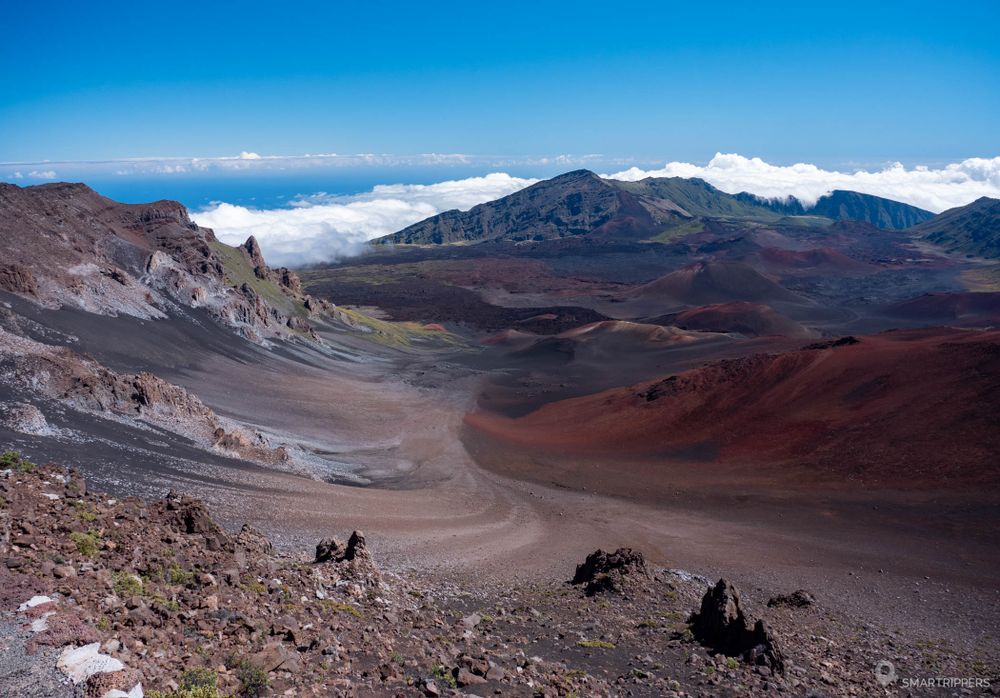
We feel here that the Earth has been unleashed and the result is a spectacle that only the clouds animate on the scale of what man can perceive, it's completely crazy! We forget for a few minutes our thirst for photos to just take the time to contemplate and record in our memory what Mother Nature has concocted for us at that moment.
To enjoy the panorama even more, you can go to the top of Pā Ka'oao, a small rocky peak overlooking the car park, which is quite easily accessible via a 320-metre trail dotted with big rocky steps. At the very end, you will be practically alone to observe the panorama and photograph it from every angle without being bothered by the hundred or so tourists on board the buses who don't take the time to go up.
This is also where the famous Keonehe'ehe'e Trail (Sliding Sands Trail) begins, the must-do hike if you want to venture into the heart of the ash cones that you'll hear about afterwards.
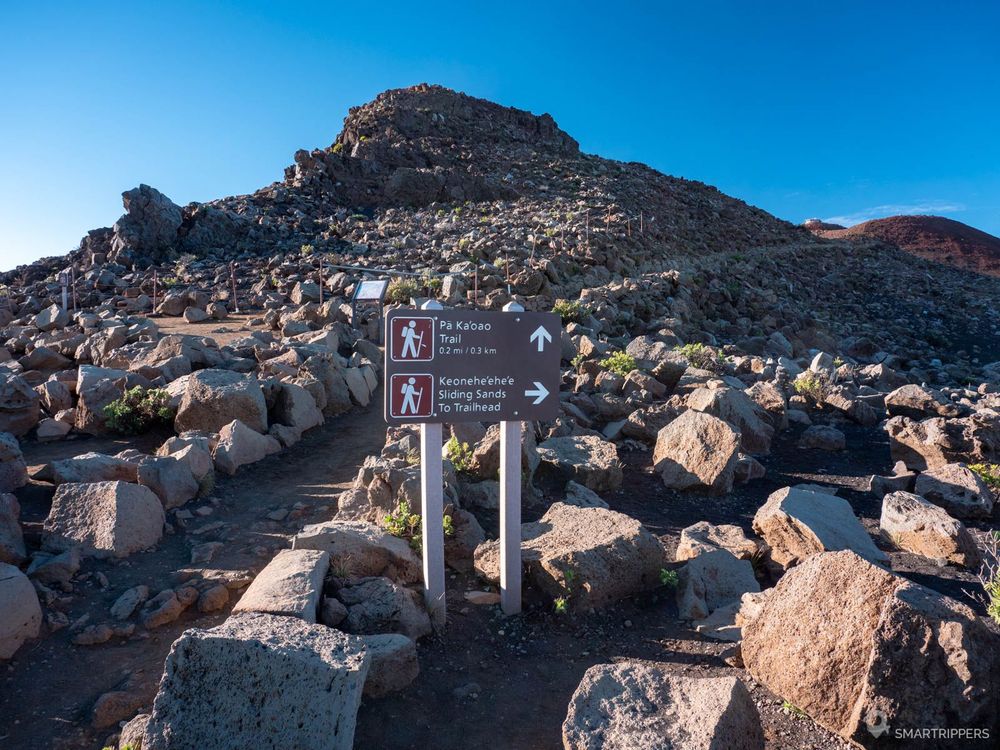
Haleakala Summit in Pu'u'ula
As you continue to the end of the road, which continues upwards past the Haleakalā Visitor Center, you will find a small building, the Summit Building, overlooking a parking lot. Here you will be at the top of Haleakalā, at the top of Maui 3055 meters above the ocean!
From the end of the parking lot you will have a view of the telescopes that scan objects orbiting the earth, telescopes powerful enough to track objects as small as a basketball. Continuing towards the building, you will discover on your right, visibility permitting, the Mauna Kea and Mauna Loa located on Big Island, the neighbouring island. It's one of the only things we're interested in coming up here, other than the informative signs in the building that might be interesting, and saying "I've come all the way up to the top of Haleakalā! ".
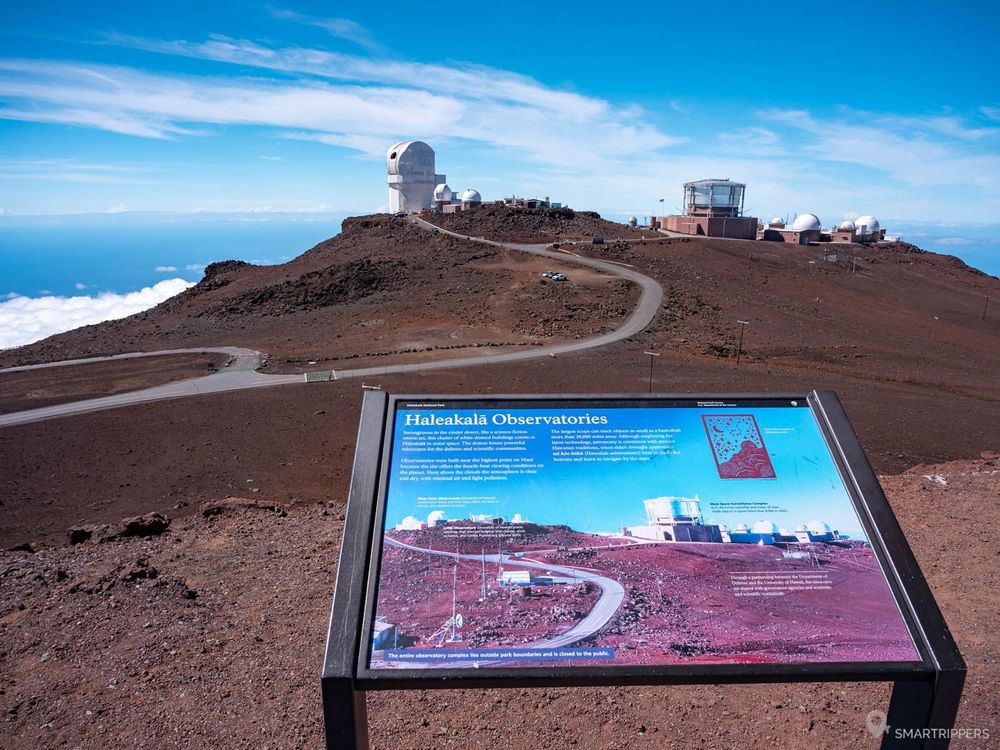
Nevertheless a small panorama is also accessible from a short dirt road from which you will have a remote view of the craters at the top. This more distant view is much less impressive than the one you will discover from the previous point of view, the distance does not allow you to appreciate the landscape although it is still fascinating.
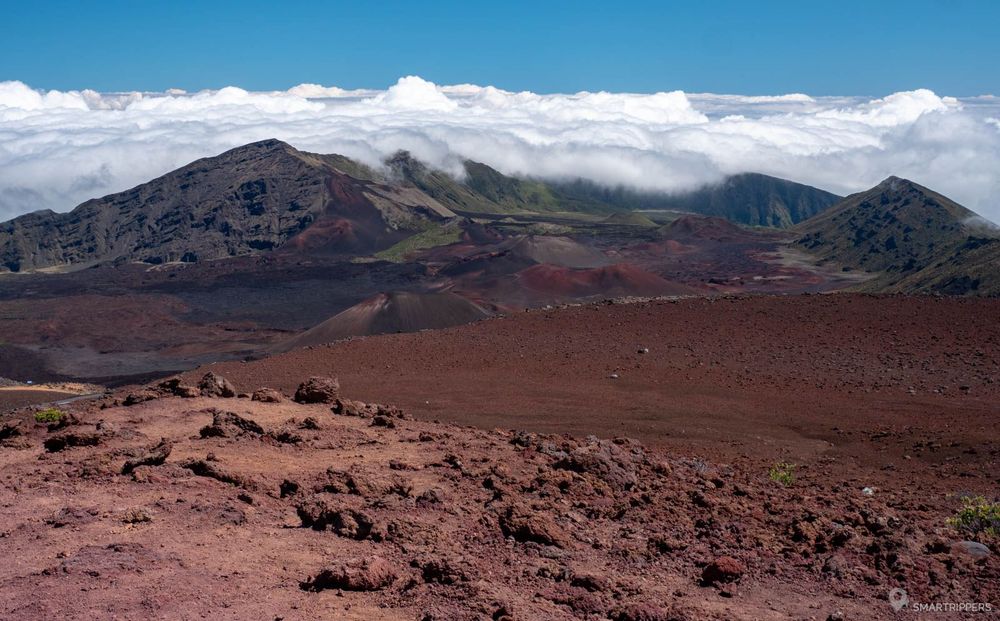
That's why we advise you to climb to the top in a second step, after having seen the panorama offered from the Haleakalā Visitor Center.
3The hikes to do at Haleakalā
Keonehe'ehe'e (Sliding Sands) Trail
Round trip in the crater - Variable duration - Medium
If you only have to choose one hike to do at the top of Haleakalā we recommend without hesitation to do the beginning of the Keonehe'ehe'e Trail, better known as the Sliding Sands Trail (marked in red on the map at the bottom of the article).
This hike is one of Maui's must-do trails where you will be amazed by the landscapes you will pass through! Nevertheless the whole Keonehe'ehe'e Trail is quite long and it will be difficult to cover it in one day. We therefore suggest you to cover only a small part of it, which will already allow you to be impressed!
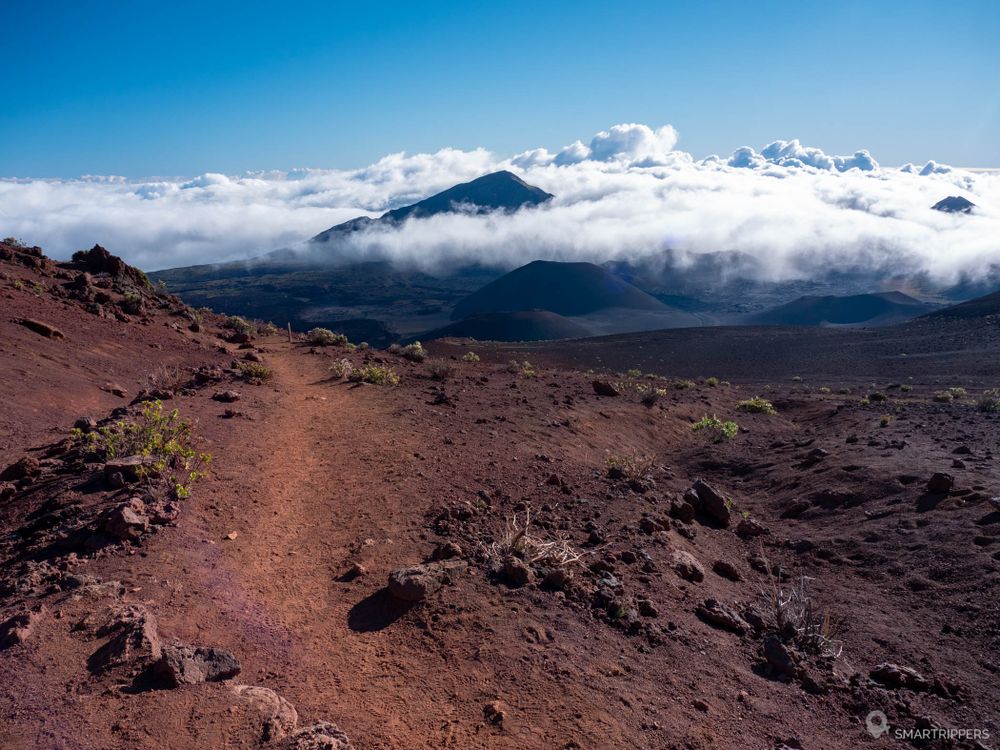
For example, you can focus on the first part of the Keonehe'ehe'e Trail to the vicinity of the Ka Luu o ka 'O'o Cinder Cone (easier to walk than to pronounce) that used to be reachable, but the access trail was closed several years ago because the ash cone was beginning to be damaged due to overcrowding. Although the path is still clearly visible (and still marked on many maps), please respect this prohibition which helps to protect this fragile site.
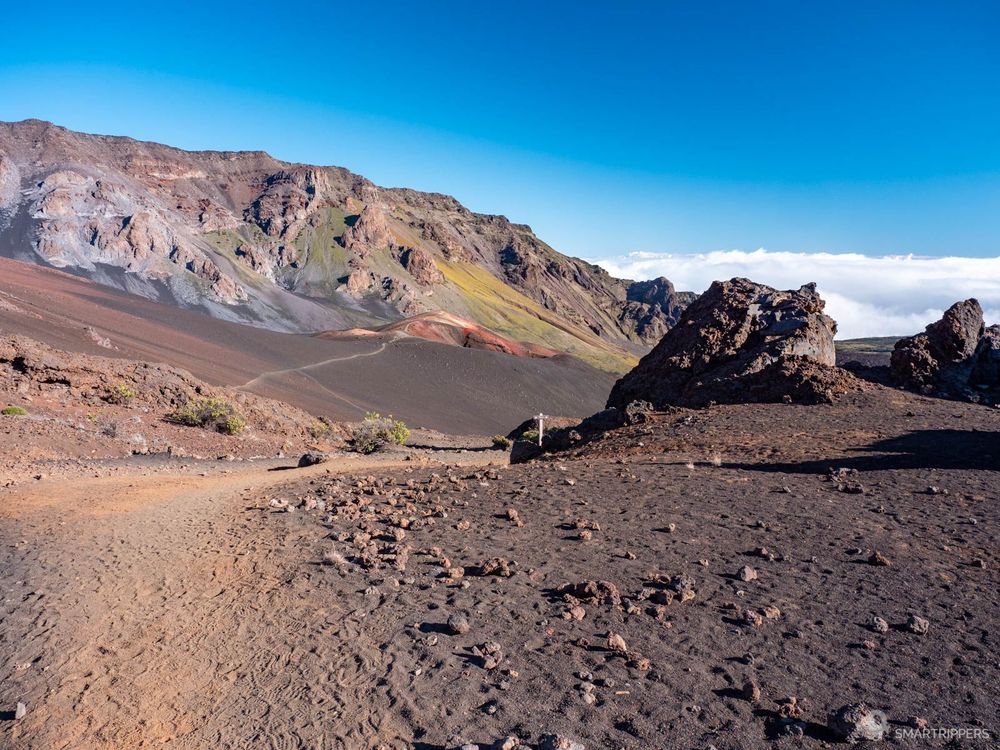
The Keonehe'ehe'e Trail or Sliding Sands Trail begins at the parking lot of Haleakalā Visitor Center along the road that continues to the observatory. It is only after 150 meters that we really start the descent into the crater.
Contrary to what its name might lead us to believe, the trail is not at all slippery (it may have been at one time), but particularly dusty. Some small portions of rocks come to break the monotony of a regular descent where we stop every 100 meters to take a picture as at this time, we still struggle to believe in the beauty of the place. Don't hesitate to reach the few rocky peaks scattered here and there along the path, but be careful not to enter a protected area.
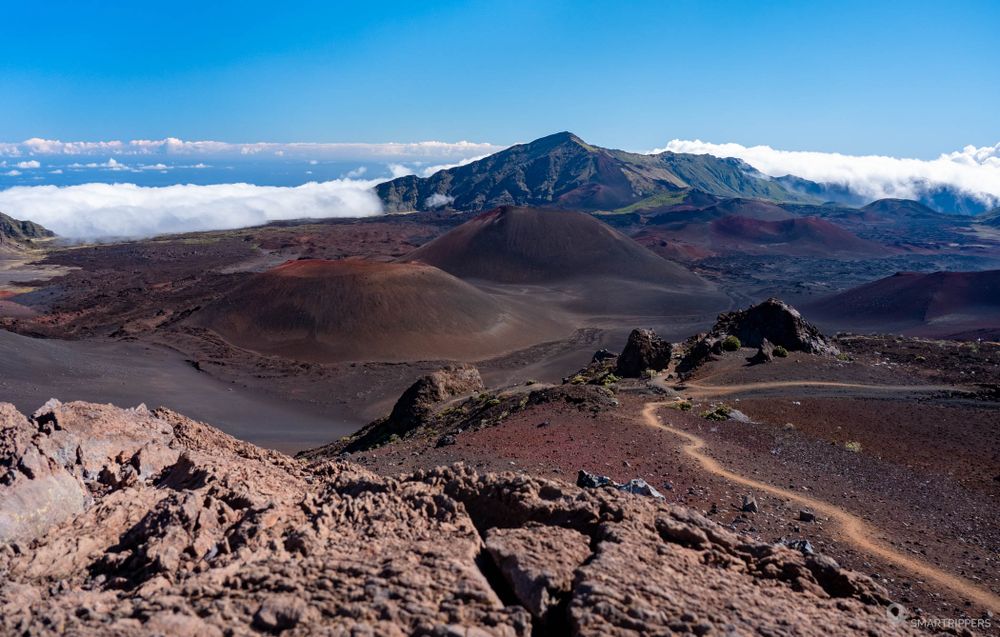
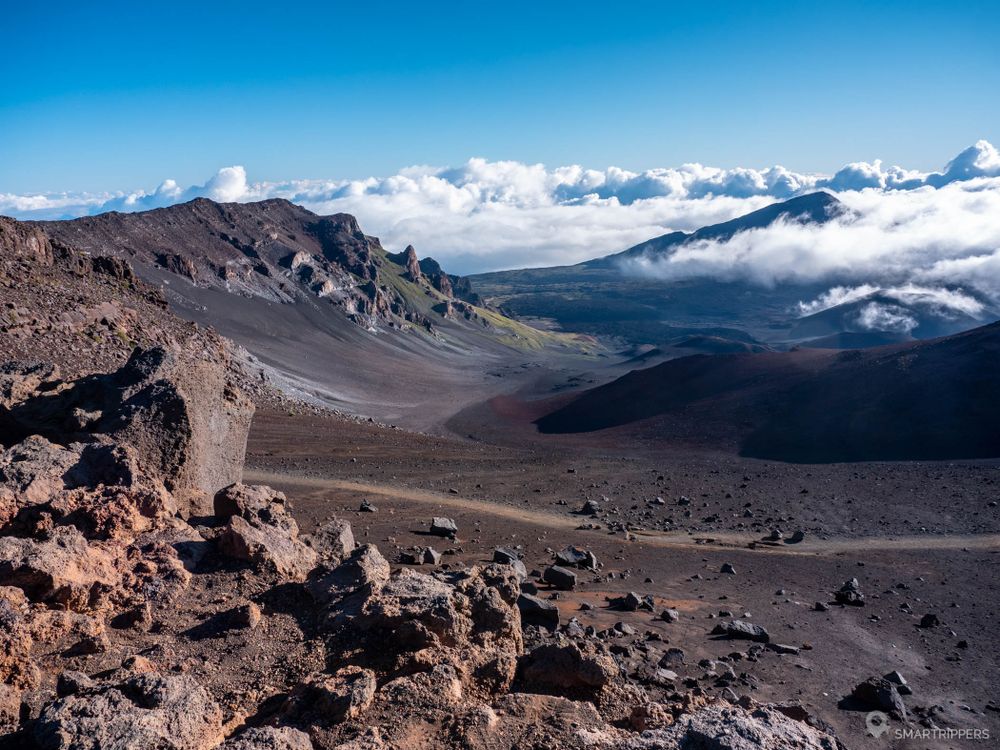
Then stop whenever you like, not forgetting that you will have to go back up the path to the car park. Be careful not to have overestimated your strength, but fortunately, the ascent, due to its regularity, is done at a steady pace.
Be careful also because the sun is very strong at this altitude and at these latitudes. So don't be stingy on long (and warm, depending on the temperature) clothes, and don't forget sunscreen, sunglasses, cap, snacks and water. Tip: keep a little room in your backpack or if you can hang your clothes in it, as the ascent will raise your body temperature!
The combination of the Keonehe'e (Sliding Sands) Trail and the Halemau'u Trail
One way of 17.8 km - 6h00 - Difficult
This one-way combination will be reserved for people in good physical shape (due to the length of the trail but also to the altitude). The advantage is that this hike will allow you to enjoy the superb scenery of the Keonehe'ehe'e (Sliding Sands) Trail and to go down deeply into the crater, then join the access road to the summit by taking the Halemau'u Trail and thus avoid going up the almost 1000 meters of difference in altitude (red then orange line on the map at the bottom of the article).
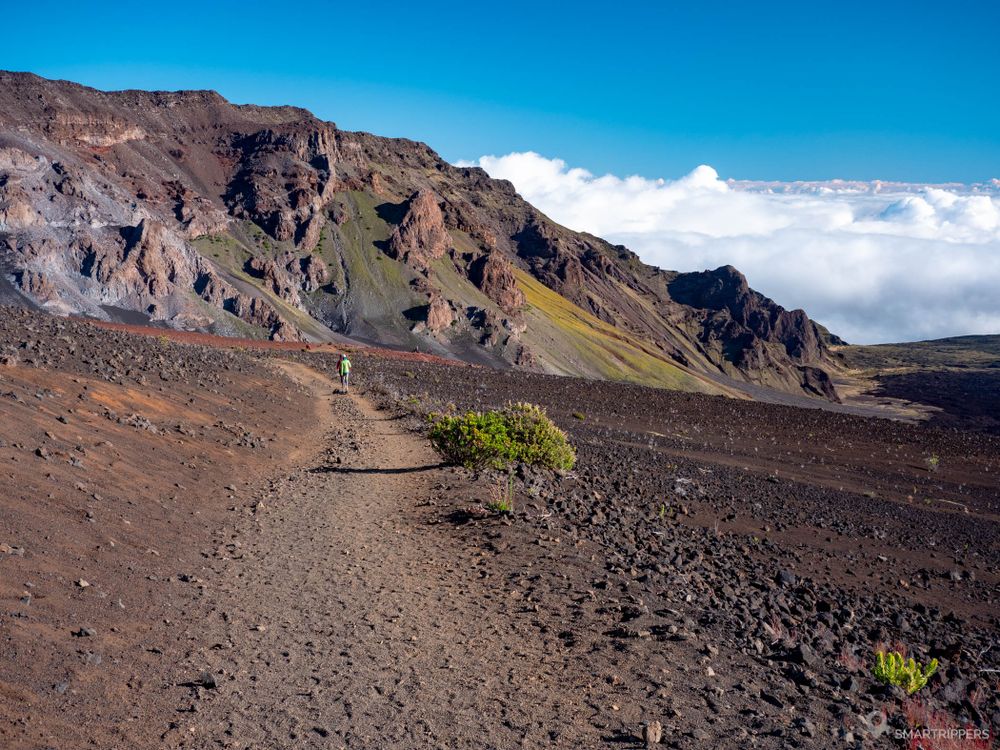
Most of the trail is downhill up to 3/4 of the trail (beware of the knees) before going up towards the end to join the road (a nice ascent of almost 400m of difference in altitude anyway).

If you wish to embark on this beautiful one-way hike, the park recommends that you leave your vehicle at the arrival point (at the small parking lot of the Halemau'u Trailhead) and have a ride by hitchhiking to the trailhead at the parking lot of the Haleakalā Visitor Center. But don't worry, the park has provided a hitchhiking area to facilitate the transportation of hikers. This area is well signposted on the lower side of the road near the end of the trail in the uphill direction. As a result, the wait is relatively low.
Please note that a camping area and a refuge are accessible at the halfway point (Hölua) and allow you to spend the night there (permit to be obtained from the Visitor Center).
Hosmer Grove Loop Trail
800m loop - 20 minutes - Easy
Radical change of scenery with this little trail that takes us into the undergrowth where the scents of eucalyptus and fir trees remind us of the American West, more precisely Mariposa Grove, King's Canyon or Sequioa National Park. An unusual thing in the Hawaiian archipelago!
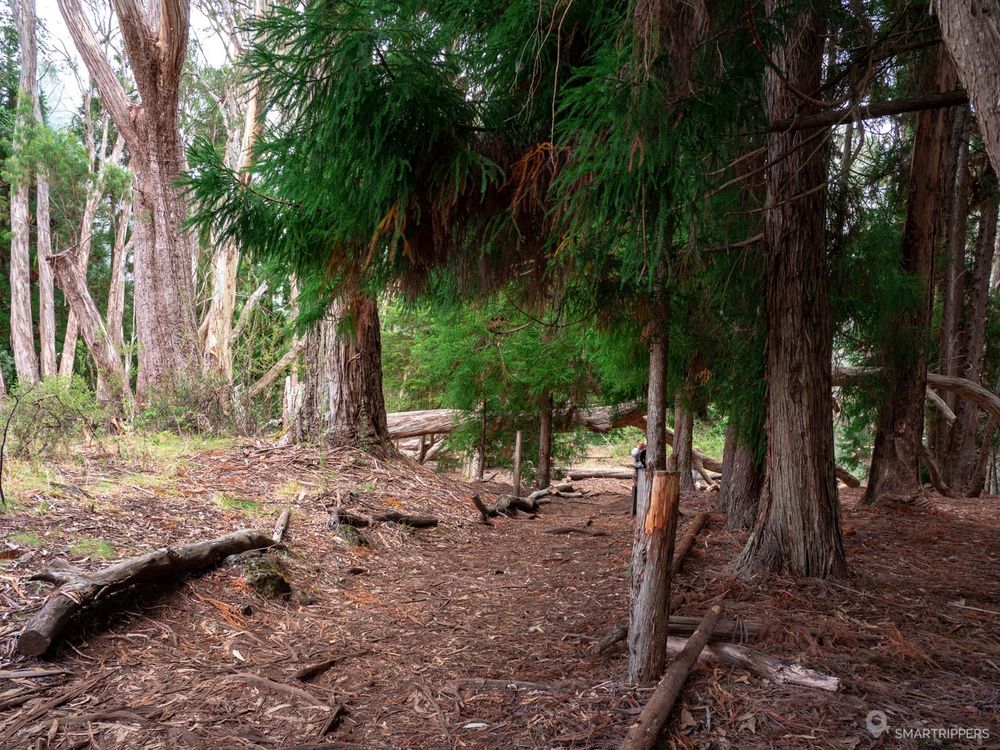
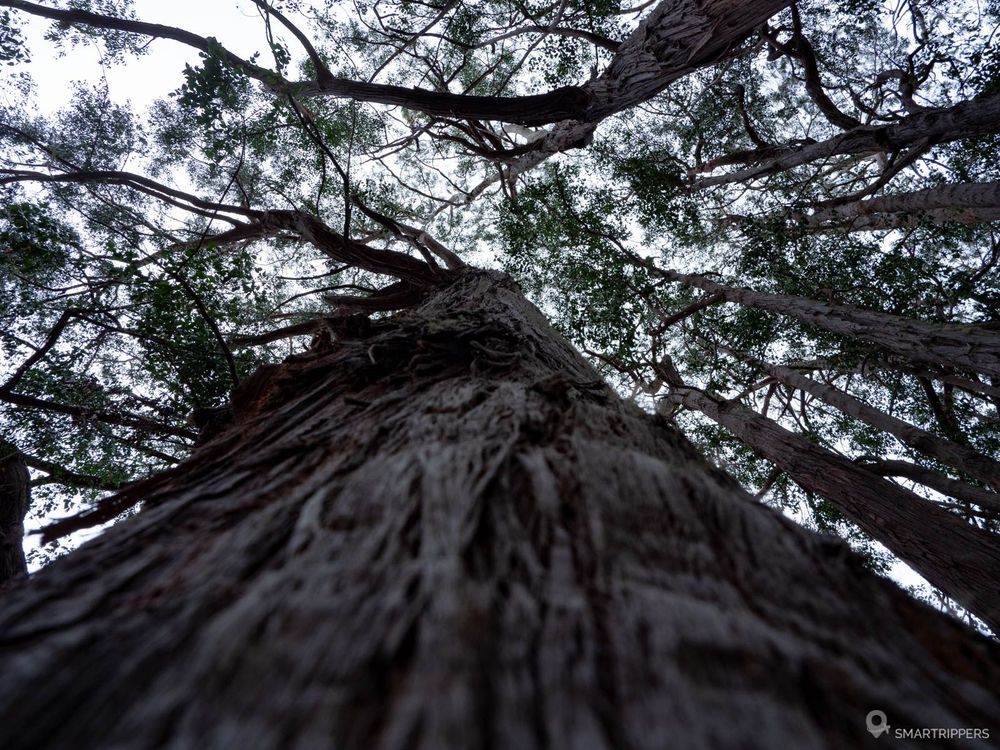
In addition to discovering here different species of trees native to Hawaii or imported since colonization, you may be able to see the very rare "Honeycreeper", small red birds endemic to Hawaii that live only in this small preserved ecosystem.
To observe them, a small lookout equipped with benches and binoculars has been set up in the middle of the trail. Finally small signs are present along the trail to learn more about the species of trees present here. Count between 15 and 20 minutes to complete this 0.8 km loop.
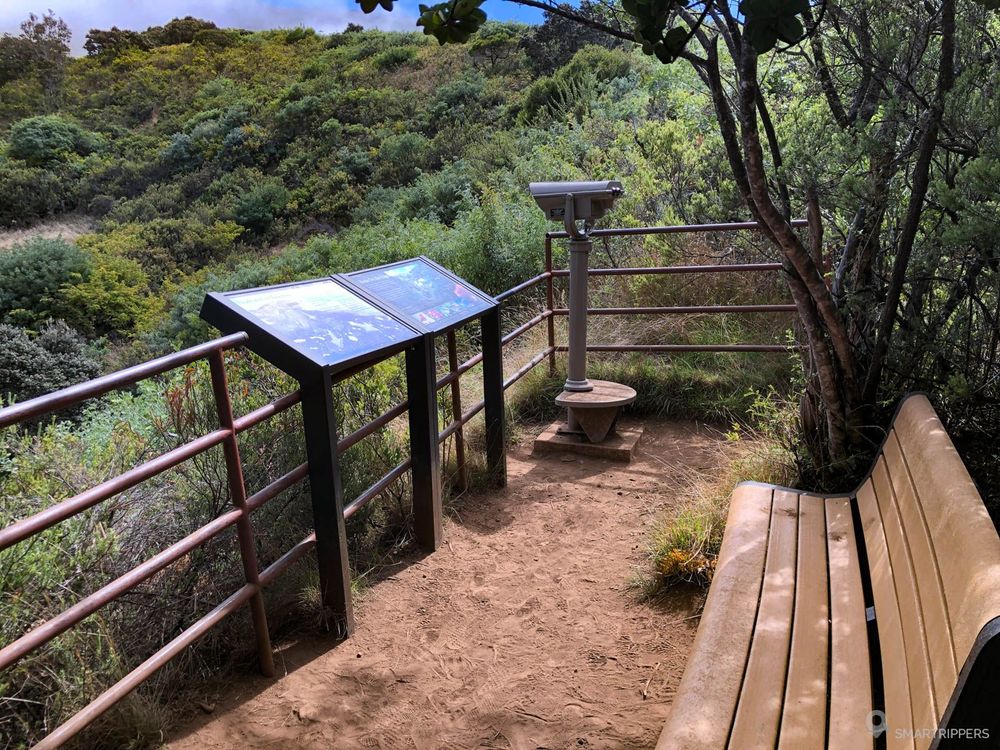
To get there, just after entering Haleakalā National Park, look for the small road on the left towards the Hosmer Grove Campground. This is where you will find the little loop. In the car park you will find sanitary facilities and several picnic tables. The campsite can be very pleasant during the summer. (Free permit to be requested at the visitor center).
4See the sunrise or sunset at the top of Haleakalā
If going up to see the small cones in the crater at the top of Haleakalā is already a wonderful experience, seeing the sunrise or sunset is another one!
In fact, the popularity of sunrises is so high that the park has had to put in place a quota to limit access to the summit between 3:00 and 7:00 in the morning. Indeed, the parking lots of the 4 lookouts described above only have about a hundred parking spaces. The park has therefore introduced a reservation system to allow only 130 vehicles to reach the summit at sunrise and avoid congestion in the car parks.
On the other hand, there are no limitations or restrictions on seeing the sunset, which is wrongly neglected in favour of the sunrises, which have become too popular.
If you want our opinion, I think that sunsets are just as beautiful as sunrises and do not require the cumbersome logistics I'm talking about just afterwards for sunrises.
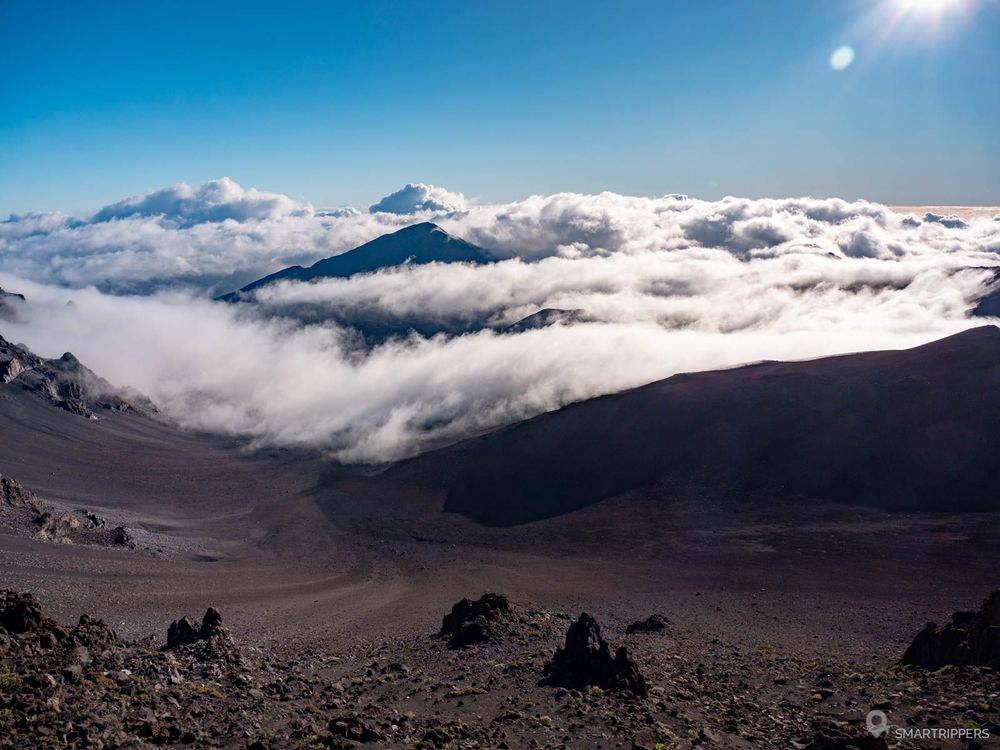
How to see the sunrise at the top of Haleakalā
First of all, there are a few rules to know.
- It is essential to buy a pass to get to the top of Haleakalā between 3:00 and 7:00 am.
- 100 passes are put on sale 2 months before the desired date.
- The remaining 30 passes are on sale at 7:00 am (Hawaii time) 2 days before the desired date.
- The pass is sold for $1 per vehicle plus $30 per vehicle once on site (unless you already have a pass).
- Once at the summit, parking spaces for the different overlooks are allocated on a first come, first served basis. Once a parking lot is full, it will no longer be possible to access it.
- If bad weather makes visibility impossible, no refund will be made.
Here are now the steps to reserve your pass and reach the top of Haleakalā before sunrise.
- Go to the official booking site: recreation.gov
- In the booking form, select "Haleakala Sunrise - Summit" in the "Tours" box and then enter "1" in the number of vehicles.
- Then select the date you wish to book and check the number of passes still available on that date by clicking on "Time".
- If it says "3 AM - XX tickets available", there is still place available, so you can continue the reservation.
- If it says "7 AM - 30 tickets not yet released", the first 100 tickets have already been sold out. However, you still have the possibility to get one of the 30 other tickets that will be released 48 hours before D-day at 7:00 am Hawaii time.
- If it says "3 AM - 100 tickets not yet released", it means that the tickets for that day are not yet open for sale, you will have to come back at the earliest 2 months before to be able to book your ticket.
- Then create your account with your personal information and pay online.
On the D-day, don't forget to come with an ID in the name of the reservation. You will then need to leave early enough to be on site in time, and ideally well in advance if you want to be able to choose the lookout that interests you.
Also take into account the access time to get to the summit, as the access could be quite congested. Usually departures are on the 3:00-4:00 a.m. shots, to be adapted according to your accommodation.
If after reading all of this, you are a little unmotivated, we highly recommend that you attend the sunset, just as beautiful and without any hassle!
5See the stars at Haleakalā
The top of Haleakalā is the best place in Maui to observe the stars when the top is above the clouds. But before you rush there, you should know that the summit does not always emerge from the clouds at night (unlike Mauna Kea) and that in any case you will have to leave the summit before 3:00 in the morning.
If the weather is good, it could be interesting to climb to the summit in the late morning or early afternoon to hike a bit, then watch the sunset and stay to watch the stars.
6Tips to prepare your visit
Altitude sickness
Unlike Mauna Kea, there are no particular restrictions to climb to the top of Haleakalā, which is a little more than 3000 meters above sea level. Even Hawaiian babies climb there!
Not knowing it initially, we took Lena (who was 7 months old) to the first Visitor Center (Park Headquarters Visitor Center) located at about 2100 meters above sea level, so that she could wait for us there (we took turns so that we could enjoy the summit each in turn). On the spot the rangers were very surprised because they are used to see babies, even very small ones, climbing to the summit. In France, it is not recommended to climb above 1600 meters with a baby under 1 year old. Lena had no problems during the 2 hours she stayed at this altitude. To do it again, we would have taken her to the summit.
We didn't feel any discomfort related to altitude sickness at the summit. Oxygen is certainly a little rarer there which made us breathe out faster than usual, but apart from that, nothing to report! We covered the first few kilometres of the Sliding Sands Trail without difficulty.
Weather
The top of Haleakalā is not easy to discover! This is due to the capricious weather at the top, which is often in the clouds.
We had the bitter experience in 2017 when we found ourselves completely in fog with wind and a little rain! We had to wait for our second passage in 2019 to discover the summit under a radiant sky twice!
Due to the time it takes to reach the summit, we advise you to check the weather forecast before you leave. It would be a shame to waste your time climbing up there and paying to find yourself in the fog and seeing absolutely nothing. For this, there is a webcam that will show you the live weather at the summit.
Also note that the weather is generally better in the morning and the amount of clouds increases as the day progresses.
One more thing: Cover up! Although it's 28°C (82°F) on the beach, it can sometimes freeze at the top of Haleakalā in winter! A sweater and a windbreaker will therefore be very useful once you're up there.
Food
If you plan to spend a good part of the day visiting the top of Haleakalā, make sure you take enough food and drink with you as there are no restaurants or shops on site. You will only find sanitary facilities and two visitor centers that are not meant to sell sandwiches.
Photography tips
Finally, we end this article with a little advice for photographers. Be aware that low light just after sunrise or before sunset will not bring out the colors of the rocks that will be in the shadow of the crater. To leave with beautiful colorful images, it will be better to wait until the sun is higher, between 10 am and 3 pm.
To show you this, here is a small comparison between two pictures taken on the same day at the same Lookout, even if both have their charm.
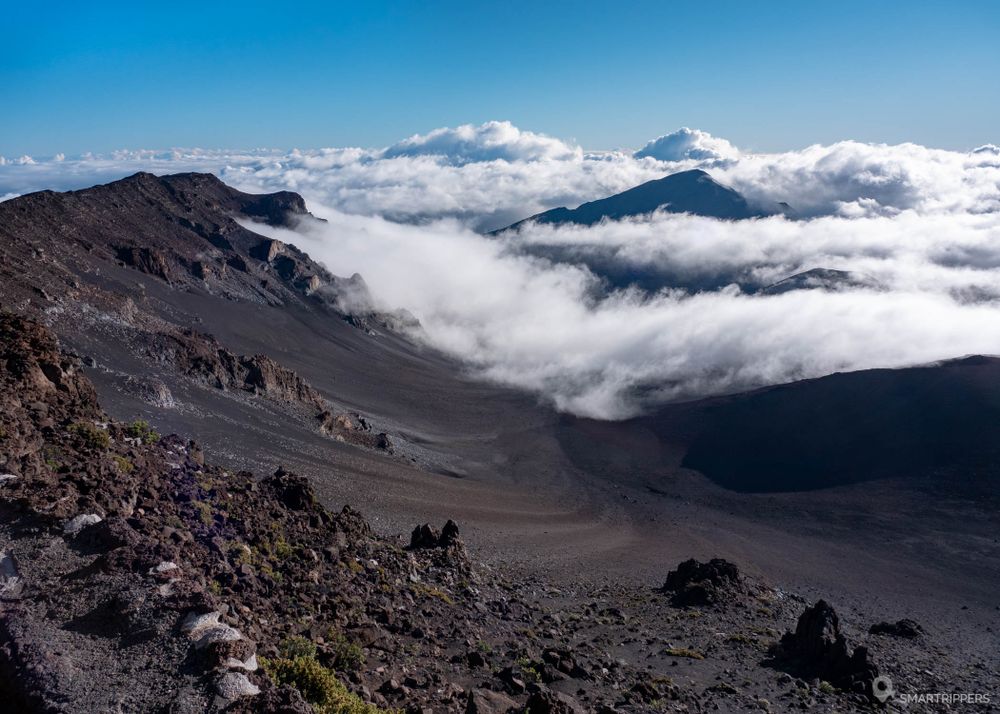

Our article on the summit of Haleakalā ends here. We hope that it will have helped you prepare your day on the great volcano of Maui and that you will have the chance to see it in great conditions! Don't hesitate to leave us a short comment about your experience :-)
We are Sandrine and Flo, French thirty-somethings. In 2019 we quit everything to live our dream, become nomads and travel around the world. We left with our baby, Lena, who was only 5 months old at the time. After a first trip around the Pacific Ocean by plane and a long 3 months stay in Hawaii, we left to discover Iceland for 3 months on board our 4WD pickup truck and truck camper. Then we continued our adventure in North America.
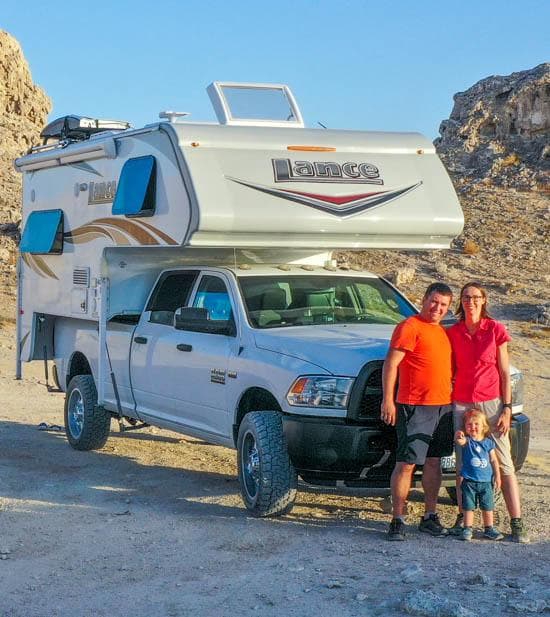
Today, if we can continue this adventure, it is above all thanks to our blog, Smartrippers! We created it one day in 2016, with the desire to share our good travel tips, without thinking that it would lead us there! We have developed it a lot over the years and have become experts on our 3 favorite destinations: Hawaii, Iceland and the American West. We now guide you to these destinations to help you plan the trip of your dreams!
Follow our adventures!